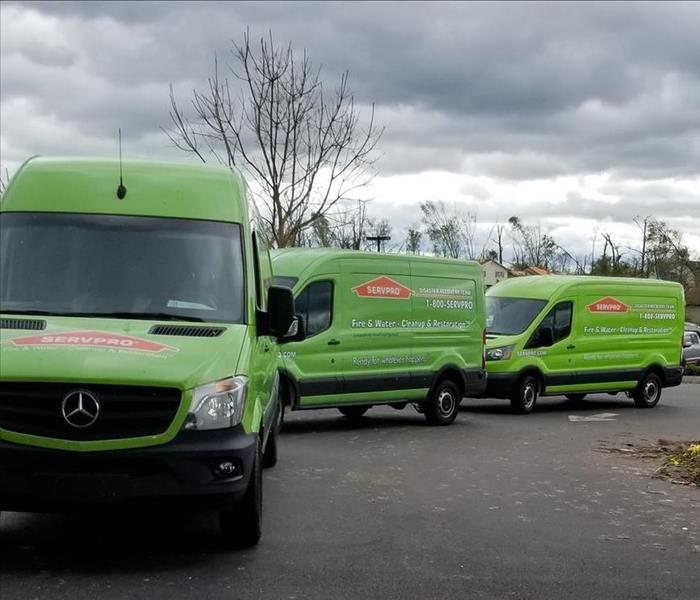How to Prepare For A Tornado in Cleveland, TN
4/30/2020 (Permalink)
Spring weather brings us warming, balmy days, but it is also a time of unpredictable weather. For this reason, it is good to always be prepared for that chance of severe thunderstorms that lead to the perfect conditions for a tornado touchdown.
In this blog, we are sharing some tips and information on tornadoes that can help keep your family prepared and safe for the worst possible scenario.
What Are Ideal Tornado Conditions?
The United States experiences roughly 1,200 tornadoes every year, resulting from severe thunderstorms, in particular those known as “supercells.”
Prime conditions for a tornado to form are when changes in wind speed and direction create a horizontal spinning effect within a storm cell. This is then tipped and dropped into a vertical position by the rising air moving up through the thunderclouds.
At first, you will not be able to see the tornado’s signature funnel cloud, but it will become visible as water droplets from the storm’s moist air condense or when it picks up dust and debris as the tornado travels along its path.
A typical tornado can grow to be 660 feet wide and will move at 10 to 20 miles per hour, although larger and faster storms have been observed. Hail and intense winds of more than 200 mph can accompany tornadoes.
The air masses aloft generally become unstable in the late afternoon during the spring and summer, making it prime time for a tornado to occur. But it is important to remember that they can occur at anytime during the day and anywhere.
What to Do in Case of a Tornado
Have you learned the difference between a tornado watch and a tornado warning? A watch will be issued when the conditions are favorable for tornadoes, while a warning is issued when a tornado has been reported by spotters or indicated by radar.
In other words, the tornado watch is a way of alerting you to the fact that there are favorable conditions for a tornado to develop, but if a warning has been issued for your area, you should take quick action to find safe shelter—especially if you are in the path of the tornado.
- Underground options like a basement or storm shelter.
- The lowest part of your home, in an area that is away from outside walls, doors and windows. Interior closets and bathrooms can be ideal options.
- If you are outside, try to get to a sturdy building. Mobile homes and trailers are not a safe option.
- If on the road and no building access is available, do not get under an overpass or bridge. Instead, find a low, flat location and use your arms to protect your head and neck.
As you take shelter in your home, use furniture cushions, mattresses or blankets to help keep your head and neck covered and protected. You should also make sure that you have flashlights, a battery-powered weather radio and extra batteries in your selected tornado shelter.
If you are caught out on the road during a tornado, DO NOT try to outrun it because chances are you won’t win. Attempt to seek a safe, sturdy shelter nearby immediately, or if that is not possible, exit your vehicle and lay flat on the ground.
Tornadoes are unforgiving and can wreak absolute havoc in their paths. While meteorologists and weather services can provide some advanced warning to potential threats, tornadoes can still occur with little to no warning at all.
If your home or business has been damaged by a tornado, know that SERVPRO of Bradley County is ready and waiting to jump into action and get cleanup and restoration of your property underway.






 24/7 Emergency Service
24/7 Emergency Service
